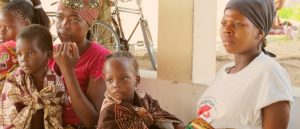A reflection here on WHO-led key initiatives to protect pregnant women and children against the scourge of malaria in underserved low- and middle-income countries
By Kirubel Workiye Gebretsadik
Medical Doctor and Master of Public Health student
Addis Ababa, Ethiopia
Malaria Eradication and Prevention through Innovation
Malaria is an infectious disease caused by parasites of the plasmodium group, spread through the bites of infected Anopheles mosquitoes. Though a preventable and curable disease, malaria is a huge burden for sub-saharan African nations. Approximately 92% of malaria cases and 93% of malaria deaths are within low- and middle-income countries.
At the seventh replenishment conference for the Global Fund to combat AIDS, Tuberculosis, and Malaria in New York, which was hosted by US president Joe Biden, governments from all around the world contributed a record US $14.25 billion. Over 45 nations attended the meeting, including governments, international partners, the commercial sector, and civil society organizations. Significant strides have been made in the fight against malaria since the global fund was established in 2002; it is predicted that interventions funded by the global fund prevented a 70% increase in malaria cases. Nevertheless, almost two decades later, there are still 241 million cases of malaria worldwide. Africa is heavily burdened by it. https://www.theglobalfund.org/en/fight-for-what-counts/
Malaria infection during pregnancy is a major public health problem. Pregnancy-related malaria infection can result in life-threatening consequences, such as severe anemia in the mother, low birth weight in the baby, or even stillbirth or death. In addition to using insecticide-treated mosquito nets and ensuring efficient case management of malaria and anemia in pregnant women, the World Health Organization (WHO) recommended in 2012 giving pregnant women at least three doses of the antimalarial drug sulfadoxine-pyrimethamine (SP) to significantly lower the risk of malaria infection. Data revealed that millions of women were still being overlooked despite this guidance. https://www.afro.who.int/publications/who-policy-brief-implementation-intermittent-preventive-treatment-malaria-pregnancy
Jhpiego is the project’s leader, and it is referred to as intermittent preventative therapy in pregnancy (IPTp). Through the use of skilled health extension program officers, this study sought to find out by providing malaria prophylaxis to women in their homes. It had the belief that it could close care gaps and open doors to more health services for millions of women. This flexible community-led strategy has been successful in 2021 in reaching 80% of the targeted pregnant women. This strategy has provided at least three doses of SP through community interventions, protecting approximately 100,000 pregnant women against malaria. http://www.ncbi.nlm.nih.gov/pubmed/23403684
SP is also successful in protecting infants against anemia and malaria. As a result, WHO also suggests intermittent preventive therapy in infants (IPTi-SP). https://www.who.int/publications/i/item/WHO-IVB-11.07
IPTi-SP is the administration of a full therapeutic course of SP delivered through the Expanded Programme on Immunization (EPI) at intervals corresponding to routine vaccination schedules for the second and third doses of DTP/Penta3, and measles vaccination — usually at 8-10 weeks, 12-14 weeks, and ~9 months of age — to infants at risk of malaria. It is anticipated that the Population Service International (PSI)-led IPTi project will produce data to encourage the broad adoption of an effective but underutilized preventive strategy that, if scaled up, could prevent 6.7 million cases of malaria and anemia in children under two by 2030. https://www.psi.org/news/ipti-plus/
Let us work together on the WHO global target for malaria 2016-2030.
By the same Author on PEAH
ONE HEALTH ONE WORLD
Social Innovation in Healthcare

